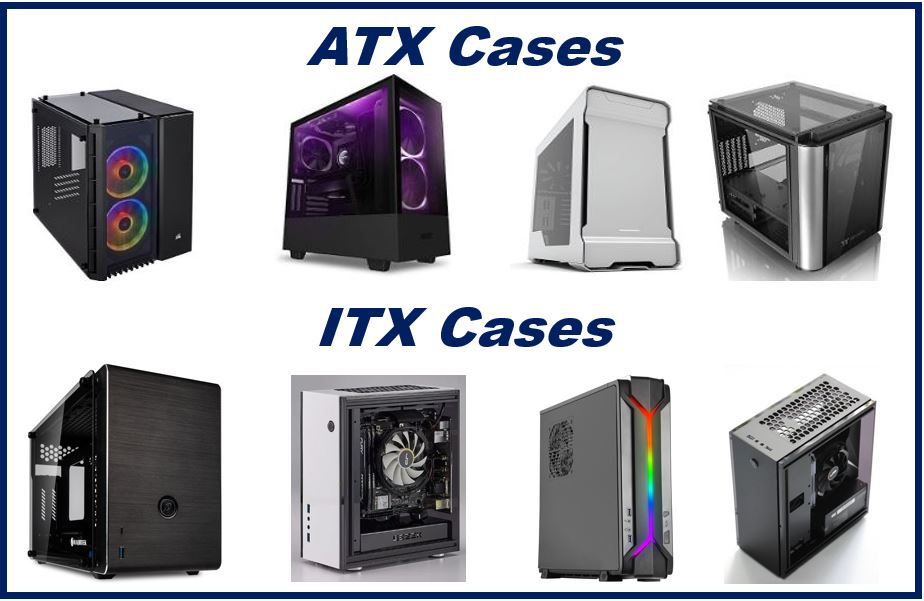Introduction
If someone wants to build a new computer, they may be deciding between ATX or ITX cases. What are these? ATX and ITX are both motherboard form factors that vary in features and sizes.
 People often prefer standard motherboard sizes, thinking bigger is better, which is not always true. The Smallest ATX Case and mini ITX are small form factors that work great for smaller computers, providing all the essential features that run the equipment.
People often prefer standard motherboard sizes, thinking bigger is better, which is not always true. The Smallest ATX Case and mini ITX are small form factors that work great for smaller computers, providing all the essential features that run the equipment.
These motherboards are useful in devices that are smaller than laptops, non-standard computers, and computer devices. Aside from usual computers, these form factors are also used in electronic devices such as home theatres, smartphones, handheld media players, digital cable boxes, digital video recorders, etc. They are preferred due to their affordability, simplicity, easier assembly, and management.
Difference between ATX and ATX
1. Size
The mini ITX offers a standard fixed size (170 MM X 170 MM). While a micro-ATX comes in three sizes: standard (305 MM X 244 MM), minimum (171.45 MM X 171.45 MM), and maximum (444 MM X 444 MM).
2. Specifications
Mini ITX is a low-power small form factor. Due to the smaller size, it can only house a few features such as only one PCI E Lane and is usually designed to support low-cost computers.
The micro-ATX is comparatively huge in terms of specifications. It can support CPUs from the VIA, Intel, and AMD having four PCI or PCI Express expansion slots. It also is backward compatible with the ATX board. It can be used in full-sized ATX cases with the same power connections and chipsets in full ATX boards.
3. Peripherals
The mini ITX case does not offer any peripherals. On the contrary, micro-ATX has a full range of integrated peripherals like audio, graphics, and ethernet.
4. Performance
Although both offer exceptional performance, it depends on what we are looking for in a case. Mini ITX works best with a smaller case. It easily overclocks a full-size ATX motherboard and can handle graphics-heavy games.
Micro-ATX serves best for a single GPU build computer and can be fitted with many cases. It is excellent for building a budget-friendly gaming computer with good performance.
5. Cooling Options
The mini ITX being a bit compact offers fewer fan options and minimal radiator support.
While micro-ATX being more significant in size can support a wider variety of cooling options and offers excellent cooling performance.
6. Cost
Mini ITX having smaller size have lower manufacturing costs resulting in more economical price. But there are cases that are priced around the range of micro-ATX, it is due to the required sophisticated designs for smaller space that increase the cost. Micro-ATX being bigger has higher manufacturing costs than the mini ITX and results in a higher price.
7. Portability
Mini ITX cases offer easy portability due to their smaller size. While ATX cases do not provide this service and very few of them can be termed as portable.
Conclusion
If you are looking to build a lower cost, budget-friendly PC but need most of the features, Micro-ATX is the option for you as it provides great performance, more features, compatibility, and better cooling options.
But if what you require is a portability option or you need it for a smaller space like cars, setup boxes are network devices; Mini ITX is the best choice for you as it offers great performance with lower cost and better portability options.
_______________________________________________________________
Interesting related article: “What is Hardware?“

